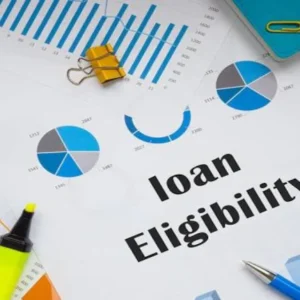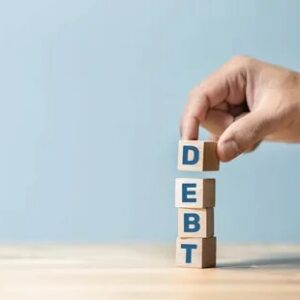
Outline:
- Introduction
- The Traditional View of Debt
- Shifting the Perspective on Debt in 2025
- Overview of the Debt Debate
- Understanding Debt: The Basics
- What Is Debt?
- Types of Debt: Good vs. Bad Debt
- How Debt Functions in the Economy
- The Negative Perception of Debt
- Cultural and Societal Views on Debt
- The Impact of Debt on Mental Health
- How Debt Becomes a Financial Burden
- Leverage: The Positive Side of Debt
- What is Leverage?
- How Leverage Can Benefit Businesses
- Leverage in Personal Finance: A Strategic Tool
- The Case for Debt in 2025: Rethinking Financial Risk
- Changing Financial Landscapes
- The Role of Debt in Personal Wealth Creation
- The Importance of Strategic Borrowing
- Debt and Economic Growth: A Necessary Evil?
- The Role of Debt in National Economies
- Government Debt vs. Consumer Debt
- How Debt Drives Innovation and Investment
- Risks of Excessive Debt: The Danger of Over-Leverage
- Understanding Over-Leverage
- The Consequences of Excessive Borrowing
- Identifying Signs of Financial Overload
- Debt Management: How to Use Debt Responsibly
- Creating a Debt Management Plan
- Using Debt for Investments and Opportunities
- Smart Borrowing Practices: Balancing Risk and Reward
- The Psychology of Debt: How to Overcome Financial Fears
- Understanding Financial Anxiety
- Overcoming the Stigma of Debt
- Building a Positive Mindset Around Borrowing
- Rethinking Debt in 2025: What Financial Experts Are Saying
- Expert Insights on Managing Debt in Modern Times
- The Future of Debt in the Context of Digital Finance
- How Technology Is Shaping the Future of Borrowing
- Personal Finance Case Studies: Real Life Success Stories
- How People Have Benefited from Smart Debt Management
- Turning Debt into an Asset: Case Study 1
- Lessons from Those Who Successfully Used Leverage
- Is Debt Always Bad? Final Thoughts
- Reevaluating Debt as a Financial Tool
- Balancing Risk and Reward
- Empowering Yourself with Financial Knowledge
- Conclusion
- Taking Control of Your Financial Future
- A New Perspective on Debt in 2025
- FAQs
- Is all debt bad?
- What is good debt vs. bad debt?
- Can I use debt to improve my financial situation?
- How can I avoid the risks of excessive debt?
- What is the future of debt in personal finance?
READ MORE: Debt Fatigue and Mental Health: Understanding the Emotional Toll of Long-Term Financial Struggles
Is Debt Always Bad? Rethinking Leverage and Financial Risk in 2025: The New Approach to Managing Debt
 Introduction
Introduction
Debt has always carried a negative stigma. For generations, people have been taught to avoid debt at all costs, viewing it as an enemy to financial health and stability. However, as we enter 2025, it’s time to rethink this traditional perspective. With the right approach, debt doesn’t always have to be bad; in fact, it can be a powerful tool for financial growth, innovation, and wealth creation.
In this article, we’ll explore the evolving view on debt, the concept of leverage, and how managing financial risk effectively can allow individuals and businesses to harness the benefits of debt. Debt, when used strategically, can offer substantial rewards. Let’s take a deeper look at why debt may not be the villain it’s often made out to be and how it plays a crucial role in the financial landscape of 2025.
Understanding Debt: The Basics
What Is Debt?
Debt is simply the borrowing of money with an agreement to repay it with interest over time. It’s a financial tool that enables individuals and businesses to access funds they wouldn’t otherwise have. There are two major categories of debt:
- Secured Debt: Debt that is backed by collateral, such as mortgages or car loans.
- Unsecured Debt: Debt that is not tied to any collateral, like credit card debt or personal loans.
Understanding the nature of debt is crucial because the way we manage it affects our financial future.
Types of Debt: Good vs. Bad Debt
Not all debt is created equal. Good debt is debt that helps you grow wealth or improve your financial situation. This could include student loans, mortgages, or business loans that lead to income generation. On the other hand, bad debt typically involves borrowing money for items that don’t appreciate in value, such as high-interest credit cards for non-essential purchases.
The key to leveraging debt successfully lies in distinguishing between these two types. While bad debt can lead to financial instability, good debt can be used to generate income and wealth in the future.
How Debt Functions in the Economy
Debt plays a crucial role in both personal finances and the broader economy. It is a tool that helps individuals, businesses, and governments access capital to fuel growth, investment, and innovation. Understanding how debt functions in the economy is essential, especially as we navigate financial markets and make decisions about borrowing, lending, and spending.
Debt and Economic Growth
At the macroeconomic level, debt is a key driver of economic growth. When individuals and businesses take on debt, they are able to make investments that they otherwise could not afford. For example, a consumer might take out a loan to buy a home, or a business may borrow to invest in new equipment or expand its operations. These investments, in turn, stimulate economic activity.
For governments, debt is used to fund infrastructure projects, public services, and social programs. The issuance of government bonds is a common method for raising funds to invest in long-term projects that contribute to national development. By borrowing money, governments can finance things like roads, schools, and healthcare, which benefit society and contribute to economic growth.
Debt in Personal Finance
In personal finance, debt is often used as a means of accessing larger amounts of capital to make significant purchases or investments. Mortgages, student loans, and car loans are common types of debt that allow individuals to buy homes, obtain an education, or purchase vehicles without having to save up for these expensive items over a long period.
Mortgage Debt: One of the most significant ways debt functions in personal finance is through mortgages. By taking on a mortgage, individuals are able to buy a home and pay for it over a period of time. The long-term nature of a mortgage allows homeowners to invest in property without having to pay the full purchase price upfront.
Student Loans: Another common form of debt that functions in the economy is student loans. These loans allow individuals to finance their education and acquire skills that increase their earning potential over time. By investing in education, individuals can improve their long-term financial situation, while also contributing to the economy by becoming skilled workers in various industries.
Debt in Business Investment
For businesses, debt is a primary tool for financing growth and innovation. Companies often take on loans to invest in capital projects, research and development (R&D), and expanding their operations. Borrowing allows businesses to leverage other people’s money to pursue opportunities that can lead to higher profits. This is referred to as leverage.
For example, a company might borrow money to develop a new product, which could increase its revenue and market share. In this case, the debt is an investment in future growth. By using borrowed funds wisely, companies can generate profits that exceed the cost of borrowing, leading to greater returns for shareholders.
The Role of Debt in National Economies
At the national level, debt is essential for governments to fund public services and stimulate economic activity. Governments borrow money by issuing bonds, which are purchased by investors. The funds raised through these bonds are used for infrastructure projects, social programs, and other initiatives that contribute to the overall well-being of the economy.
In many cases, government debt is seen as necessary for economic development. For example, infrastructure projects like highways, bridges, and public transportation systems require significant investment, which is often financed through government debt. These projects create jobs, boost productivity, and improve the quality of life for citizens, all of which contribute to long-term economic growth.
READ MORE: The Impact of Government Debt on Economic Development – IMF
Debt and Financial Market Liquidity
In addition to personal and business investment, debt plays a significant role in the liquidity of financial markets. Debt instruments such as bonds and notes are essential in providing markets with liquidity, which ensures that assets can be bought and sold quickly. Debt securities are often used as a benchmark for pricing other financial instruments, influencing everything from mortgage rates to corporate loans.
When investors buy and sell bonds, they help determine the interest rates at which individuals and businesses can borrow money. A healthy debt market enables efficient capital allocation, ensuring that resources are used where they are most needed in the economy.
The Risk of Over-Indebtedness
While debt is crucial for economic growth, excessive borrowing can lead to financial instability. Over-indebtedness—whether at the personal, business, or national level—can create a range of problems, including defaults, bankruptcies, and economic recessions. This is why it’s important to understand the risks associated with taking on too much debt and ensure that borrowing is done responsibly.
For individuals, taking on too much debt can lead to personal financial crises. Similarly, businesses that over-leverage themselves can face financial difficulties that prevent them from meeting their obligations. On the national level, excessive government debt can lead to fiscal crises and a loss of confidence in the economy.
The Dangers of Over-Indebtedness – World Bank
Debt as a Catalyst for Innovation and Investment
Debt, when used strategically, can drive innovation. Many groundbreaking innovations have been financed through borrowing, as companies take on debt to fund research and development or acquire new technologies. In industries like technology, pharmaceuticals, and green energy, borrowing is often necessary to fund expensive R&D that can lead to life-changing innovations.
The financial risk involved in borrowing is balanced by the potential for high returns. For example, a pharmaceutical company might borrow money to develop a new drug, and if successful, the profits from that drug could vastly exceed the initial investment.
READ MORE: Debt Financing for Innovation – Harvard Business Review
Debt is an integral part of the economy that serves multiple functions. It is used by individuals to make large purchases, by businesses to fund growth, and by governments to invest in public goods. While debt has historically been viewed as a potential burden, it is clear that, when used strategically, it can drive significant economic growth and innovation.
However, as with any financial tool, debt must be managed responsibly. Over-indebtedness can have severe consequences, leading to defaults and financial instability. Understanding how debt functions at various levels—from personal finance to national economies—can help individuals and businesses make informed borrowing decisions that benefit them in the long run.
In an economy, debt plays a critical role in fueling growth. Governments, businesses, and individuals use debt to fund investments, make purchases, and drive economic activity. For example, businesses may take out loans to expand operations or develop new products, which in turn creates jobs and stimulates growth.
The Negative Perception of Debt
Cultural and Societal Views on Debt
For decades, debt has been seen as a burden that should be avoided at all costs. Societal norms often glorify debt-free living, portraying those with large amounts of debt as irresponsible or financially reckless. This perception is deeply embedded in our culture, and it often leads to shame and fear surrounding financial struggles.
However, in 2025, it’s important to reconsider this mindset. Debt is not inherently bad—it’s how we manage it that matters. A person who uses debt to invest in their education or a business is using debt as a tool for growth, not destruction.
The Impact of Debt on Mental Health
One of the greatest challenges of debt is its emotional and psychological toll. Chronic debt can lead to stress, anxiety, and even depression. The fear of creditors, late payments, and mounting interest rates can significantly affect a person’s mental health.
Debt fatigue is a real issue that affects many individuals who find themselves overwhelmed by their financial situation. It’s crucial to recognize the mental health aspect of debt and seek support when needed.
How Debt Becomes a Financial Burden
When individuals accumulate too much debt, it becomes difficult to keep up with payments, leading to a cycle of missed payments, increasing interest rates, and financial instability. Over time, debt can become a burden that holds individuals back from achieving their financial goals, creating a sense of hopelessness.
Leverage: The Positive Side of Debt
What is Leverage?
Leverage refers to the use of borrowed capital to increase the potential return on investment. It’s a strategy used by both individuals and businesses to amplify their purchasing power. In personal finance, leverage could mean taking out a loan to purchase a property, while in business, it could involve borrowing funds to expand operations or acquire new assets.
When used correctly, leverage can lead to significant financial growth. However, it’s important to use leverage carefully, as it comes with risks.
How Leverage Can Benefit Businesses
Leverage allows businesses to grow quickly and efficiently. By borrowing funds, a company can invest in new products, expand operations, and hire additional employees—all of which can lead to greater profitability in the long term. The key is to ensure that the returns on these investments outweigh the cost of borrowing.
Leverage in Personal Finance: A Strategic Tool
In personal finance, leveraging debt can be a smart way to build wealth. For example, taking out a mortgage to purchase a home allows individuals to benefit from property appreciation over time. Similarly, investing in education or starting a business using loans can provide long-term returns.
The Case for Debt in 2025: Rethinking Financial Risk
Changing Financial Landscapes
In 2025, the financial landscape is rapidly evolving. With digital currencies, decentralized finance (DeFi), and other innovations, the way we interact with debt is changing. Individuals and businesses now have access to more flexible, lower-cost borrowing options, making it possible to use debt more strategically.
The Role of Debt in Personal Wealth Creation
Debt, when used wisely, can be a powerful tool for creating personal wealth. By borrowing money to invest in assets that appreciate over time, such as real estate or stocks, individuals can grow their net worth and achieve financial independence.
The Importance of Strategic Borrowing
In 2025, strategic borrowing is about understanding how debt works for your personal goals. Whether you’re financing a home, starting a business, or investing in education, debt can help you achieve these goals faster than saving up the entire amount upfront. The trick is to borrow wisely and ensure that the debt works for you, not against you.
Debt and Economic Growth: A Necessary Evil?
The Role of Debt in National Economies
At the national level, debt plays an essential role in economic growth. Governments often issue bonds and take on debt to fund infrastructure projects, public services, and social programs. This kind of borrowing drives economic activity and supports national development.
Government Debt vs. Consumer Debt
While government debt is often seen as a necessary tool for economic development, consumer debt is often viewed more negatively. However, both forms of debt are interconnected. Consumer debt allows individuals to access credit and participate in the economy, while government debt supports public services and infrastructure that benefit society at large.
How Debt Drives Innovation and Investment
Debt can be a catalyst for innovation and investment. By borrowing money, businesses can invest in new technologies, research, and development, leading to breakthroughs that improve lives and drive economic growth. Similarly, individuals can use debt to invest in education and skills development, opening doors to better career opportunities.
Risks of Excessive Debt: The Danger of Over-Leverage
Understanding Over-Leverage
Over-leverage occurs when an individual or business takes on too much debt, making it difficult to repay and resulting in financial strain. This can lead to defaults, bankruptcies, and financial ruin. It’s important to strike a balance when using leverage, ensuring that the potential returns justify the risks involved.
The Consequences of Excessive Borrowing
Excessive debt can lead to serious financial consequences. For individuals, this could mean losing assets, facing foreclosure, or declaring bankruptcy. For businesses, it may result in insolvency or failure. It’s essential to understand the risks and avoid over-leveraging.
Identifying Signs of Financial Overload
It’s crucial to recognize when you’re heading toward over-leverage. Signs include difficulty making payments, taking on new debt to cover existing obligations, and neglecting financial responsibilities. Early intervention can help prevent a financial crisis.
Conclusion
As we rethink our approach to debt in 2025, it’s clear that debt isn’t inherently bad—it’s how we manage it that matters. Whether used for investment, wealth creation, or funding business growth, debt can be a powerful tool when leveraged strategically. However, it’s equally important to recognize the risks of over-leveraging and to manage debt responsibly to avoid financial hardship.
By understanding the role of debt in personal and economic growth, individuals and businesses can harness the benefits of borrowing while minimizing risks. Let’s embrace a new perspective on debt, one that empowers us to use it to our advantage and build a better financial future.
FAQs
1. Is all debt bad?
No, not all debt is bad. Good debt, such as a mortgage or student loan, can be used strategically to build wealth or improve financial stability.
2. What is good debt vs. bad debt?
Good debt helps you invest in assets or opportunities that will increase your wealth, while bad debt is used for non-essential purchases and typically comes with high-interest rates.
3. Can I use debt to improve my financial situation?
Yes, when used wisely, debt can help you invest in assets, build wealth, or start a business that generates income.
4. How can I avoid the risks of excessive debt?
Avoid over-leveraging by borrowing only what you can afford to repay and maintaining a balanced approach to debt. Creating a budget and managing payments can also help.
5. What is the future of debt in personal finance?
As financial technologies and digital currencies evolve, debt will continue to play a key role in personal finance. Understanding how to use debt strategically will be crucial for financial success in 2025 and beyond.







